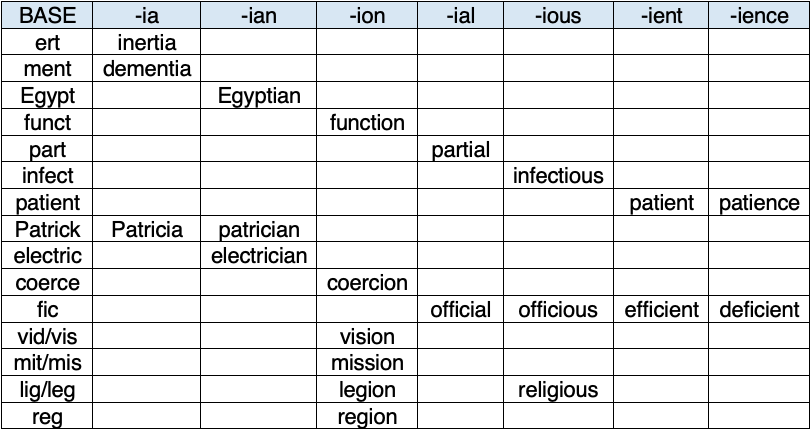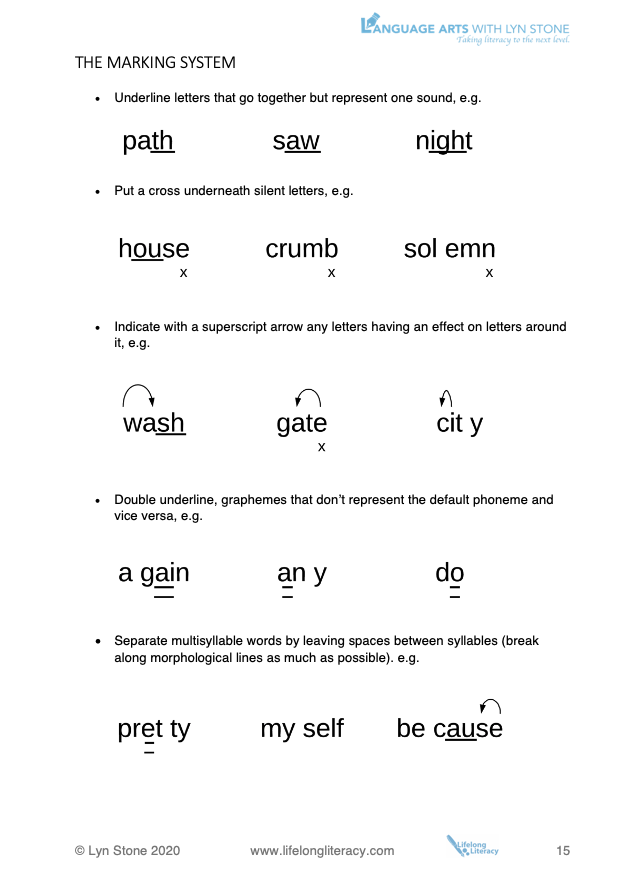Language Arts with Lyn Stone (St Monica's Wodonga)
A 4 Step Process
So we’ve established that orthographic mapping, the process of storing words in long-term memory happens best if words are driven via the phonological route. Now what? How do we make that happen for the tens of thousands of words out there?
By taking four steps:
- Define
- Inspect
- Group
- Practice
We will demonstrate by teaching the word diagonal:
1. Define the target word in child-friendly language.
You don’t have to recite the Oxford English Dictionary. You also shouldn’t canvas the audience with questions like, “Does anybody know what diagonal means?”
This type of questioning can and does lead to wrong answers, which quite possibly could be the ones your students are paying attention to at the time. Introduce new information by introducing new information, not a bunch of dodgy theories and then the new information. That’s Direct Instruction 101. It also allows slow processors to not always get beaten by fast processors.
Here is a suggested dialogue:
TEACHER “Repeat after me: Diagonal is an adjective. It describes a straight line that goes up or down, and across.”
STUDENTS “Diagonal is an adjective. It describes a straight line that goes up or down, and across.”
TEACHER “What part of speech is the word diagonal?”
STUDENTS “An adjective.”
TEACHER “What kind of line does it describe?”
STUDENTS “A straight line.”
TEACHER “Does the line go one way or two ways?”
STUDENTS “Two ways.”
TEACHER “Which ways?”
STUDENTS “Up or down and across.”
And so on.
2. Inspect the structure.
Break the word into its base and any affixes.
Diagonal is composed of three parts: the base -gon-, the prefix dia- and the suffix -al.
-gon- means “angle/corner”
dia- means “through”
-al is a derivational suffix used to form adjectives
This word describes a line that goes from one corner to another.
3. Who is in its family?
What other words have dia- or -gon- in them? Notice how I’m not interested in words containing -al. Can you figure out why?
dia- family:
diagram
diorama
diagnosis
dialogue
-gon- family:
polygon
hexagon
pentagon
4. Write and say two ways, first for spelling, then for reading.
Once 1-3 are explored, it’s time to write the word, saying each part carefully, so that orthographic mapping is maximised. They write the word, mark any parts they need to pay attention to and revisit these words often by drilling them two ways: first for spelling (sound it out), then for reading (say the whole word).
In multisyllabic words, dividing them along morphemic boundaries and leaving a space between each syllable is workable, so for diagonal:
di a gon al
CAUTION!
Trouble erupts when certain bases ending in <t, c, s, or g> are merged with the suffixes -ia, -ian, -ion, -ial, -ious, -ient, -ience. Suddenly the pronunciation changes in the final consonant and becomes a fricative (militia, martian, suspicion, visual, religious, patient, sentience). It is tempting to teach these endings as suffixes, and in other works, I have, but always within the context of generating them from the true suffix. The chart below shows some examples:

We have uploaded some 4-Step Process framework sheets here. When you do your exercise, you are welcome to use them with your students.
4 steps
